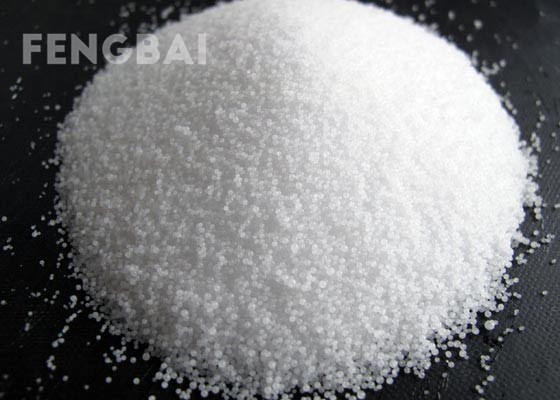
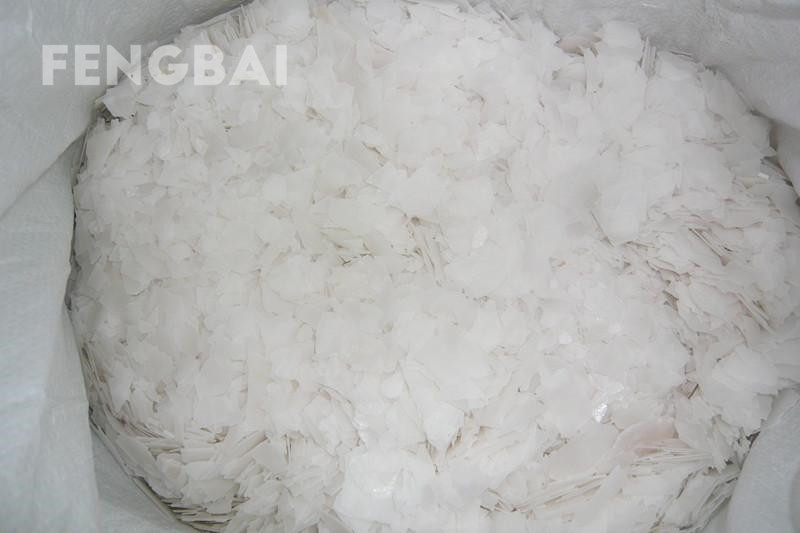
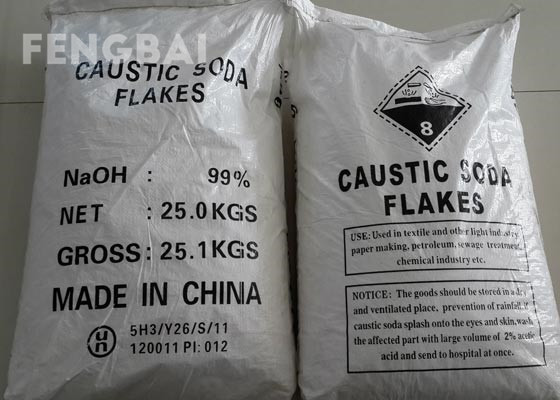
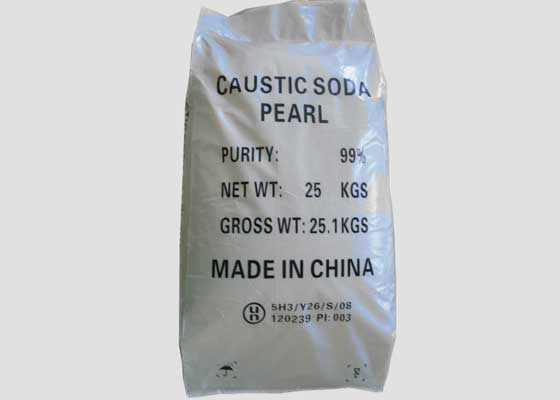
Caustic Soda Pearls/Flakes 99%
- CAS No: 1310-73-2
- HS Code: 2815110000
- MF: NaOH
- Sodium Hydroxide %: ≥99
- Description: Caustic soda, also called sodium hydroxide, is a strong caustic alkali, generally white translucent sheet solid, soluble in water (heat release when dissolved in water) and forms an alkaline solution. It is deliquescent, easy to absorb water vapor and carbon dioxide in the air. Caustic soda in water treatment can be used as an alkaline cleaner, soluble in ethanol and glycerin, insoluble in propanol, ether. It also corrodes carbon and sodium at high temperatures. And it has a disproportionation reaction with chlorine, bromine, iodine, and other halogens. It forms salt and water when neutralizing with acids. Contact us online to can get a price list now.
What Are Types of Caustic Soda for Sale in Fengbai
- Caustic Soda Flakes
- Caustic Soda Pearls
- Caustic Soda Liquid
Caustic soda flakes is flaky white translucent solid in appearance, which is obtained by evaporating liquid caustic soda. The molten salt method is one of the methods for producing sodium hydroxide flakes. The lye is concentrated from 32% to 61% in the falling film evaporator. The heating source adopts medium pressure steam and secondary steam, and evaporates under vacuum. The 61% lye is then passed through the falling film concentrator, using molten salt as the heat carrier, the lye is concentrated into molten alkali under normal pressure. Then the caustic soda flakes are made by the flake alkali machine. In addition to water treatment fields, sodium hydroxide flakes are widely used in the light textile industry, such as papermaking, synthetic detergent and soap, viscose fiber, rayon and cotton fabric. Also be used in pesticides, dyes, rubber and chemical industries, petroleum drilling, petroleum oil refining and tar refining, as well as defense industry, machinery industry, wood processing, metallurgical industry and urban construction.
| Items | Caustic Soda Flakes |
| Sodium Hydroxide %≥ | 99 |
| Sodium Carbonate%≤ | 0.5 |
| Sodium Chloride %≤ | 0.03 |
| Ferroso-ferric Oxide %≤ | 0.005 |
| Particle size | —– |
| Packing | 25kgs plastic woven bags double lined with polythene bags. 1200kg jumbo bags. |
Caustic soda pearls is granular in appearance. According to the particle size, it can be divided into coarse-grained and particulate sodium hydroxide. The particle size of the particulate granular is about 0.7mm with the shape similar to washing powder. It has all the chemical properties of sodium hydroxide. When placed in the air, it will absorb moisture and deliquescence, react with carbon dioxide to deteriorate. The packaging requires drying and sealing. Generally, 25kg three-layer plastic woven bags are used to package granular caustic soda.
In most industrial fields, caustic soda pearls have better performance than caustic soda flakes and other solid sodium hydroxide. So it is widely welcomed by industrial manufacturing. At the same time, the production process of sodium hydroxide pearls is more difficult and complicated. Of course, the price is generally higher than that of the flake type.
| Items | Caustic Soda Pearls |
| Sodium Hydroxide %≥ | 99 |
| Sodium Carbonate%≤ | 0.5 |
| Sodium Chloride %≤ | 0.03 |
| Ferroso-ferric Oxide %≤ | 0.005 |
| Particle size | ≤ 0.8 mm 8%max |
| 0.8-1.2 mm 90%min | |
| ≥1.2 mm 2%max | |
| Packing | 25kgs plastic woven bags double lined with polythene bags. 1200kg jumbo bags. |
Caustic soda lye is pure liquid, which is colorless and transparent. Industrial grade mostly contain impurities, mainly sodium chloride and sodium carbonate, and sometimes a small amount of iron oxide. When dissolved into concentrated liquid caustic soda, most of the impurities will float to surface and can be separated and removed. In the chemical industry, it is used to manufacture formic acid, oxalic acid, borax, phenol, sodium cyanide, as well as soap, synthetic fatty acid and synthetic detergent. In textile printing and dyeing industry, it is used as a solvent for cotton cloth desizing agent scouring agent, mercerizing agent and vat dye. In the smelting industry, it can be used to manufacture aluminum hydroxide, aluminum oxide and metal surface treatment agents. In instrument industry, it is used as an acid neutralizer, decolorizer and deodorizing agent. In adhesive industry, it is used as starch gelatinizer and neutralizer. In addition, it is widely used in enamel, medicine, cosmetics, tanning, paint, pesticide, glass and other industries. We can supply the purity of 32%/50% caustic soda liquid with the package of 20L/25L/30L/220L drum and 1000L IBC drum.
Inquiry Us for Quotation Here
Leave your requirements in detail here(including the specifications, package, quantity, country, etc.), we will reply you quickly.
SEND US EMAILGET PRICE NOWWhat is Caustic Soda 99% Used for
Sodium hydroxide uses in making soap, printing and dyeing, textile, papermaking, refined petroleum, metallurgy, and other chemical industries because of its strong alkalinity. In addition, it is the necessary material for the production of dyes, plastics, and preparation of borax, manganate, phosphate, etc.
Caustic Soda Uses In water treatment
Widely used as water treatment chemical. In wastewater treatment plants, sodium hydroxide can reduce the hardness of water through a neutralization reaction. In the industrial field, it is a regeneration agent for the regeneration of ion exchange resins. Sodium hydroxide is strongly alkaline and has relatively high solubility in water. Because sodium hydroxide has relatively high solubility in water, it is easy to measure the amount and can be conveniently used in various fields of water treatment.
Caustic Soda Uses In making soap
Sodium hydroxide has been used for traditional domestic purposes. To this day, the rare demand for soap, soap boxes and other kinds of washing products still accounts for about 15% of caustic soda. Making soap is the oldest and most widespread use of sodium hydroxide. Ordinary soap is the sodium salt of higher fatty acids, which is generally made by saponification of oil under the action of slightly excessive caustic soda. In the making of soap, it is used to neutralize fatty acids.
In the printing and dyeing industry
It is mainly used for indigo dyes, quinone dyes. In the process of vat dyeing, it should be used first to reduce it to cryptochromes acid. After dyeing, oxidant should be used to oxidize it to the original insoluble state. Cotton fabric treated with caustic soda liquid can remove the wax, grease, starch and other substances covered in cotton fabric, and at the same time can increase the luster of the fabric, so that the dyeing is more uniform.
In the textile industry
In the textile industry, cotton and linen fabrics are treated with caustic soda solutions to improve fiber properties. Artificial fiber such as rayon, wool, rayon, mostly viscose fiber, they are cellulose (such as pulp), caustic soda, carbon disulfide as raw materials, made viscose liquid, the spinneret, condensation and made.
In the paper industry
The raw materials of papermaking are wood or grass plants. In addition to cellulose, these plants also contain a considerable amount of non-cellulose (such as lignin, gum, etc.). The chemical is used to remove lignin. Only by removing lignin from wood can fiber be obtained. Adding it can dissolve and separate the non-cellulose components, thus making pulp with cellulose as the main component.
In the petroleum industry
This chemical is also used for refined petroleum. In order to remove the colloid in petroleum fractions, concentrated sulfuric acid is usually added to the petroleum fractions to make the colloid become acid residue and precipitate out. After pickling, the oil also contains phenol, naphthenic acid, and other acidic magazines and excess sulfuric acid, must be washed with sodium hydroxide solution, and then washed by water, in order to get refined petroleum products.
In the metallurgical industry
In the metallurgical industry, it is often necessary to convert the active components of ore into soluble sodium salts in order to remove the insoluble impurities therein. The chemical is therefore often required. For example, it is used in the preparation of cryolite and the treatment of bauxite in the smelting of aluminum. And when smelting tungsten, it is also the first concentrate and caustic soda roasting into soluble sodium tungstate, and then through the process of acid evolution, dehydration, reduction and so on to make powdered tungsten.
In other fields
sodium hydroxide can be used for various cleaning agents. Such as car washing agent, bottle washing agent, detergent, rust remover, disinfectant configuration. Mainly used for cleaning wine bottles, ceramic metal industry surface treatment and so on. There are two main functions of sodium hydroxide in ceramic manufacturing: First, it is used as a diluent in the ceramic firing process. Second, the ceramic surface will be scratched or rough after firing. After washing with a its solution, the ceramic surface will be smoother.
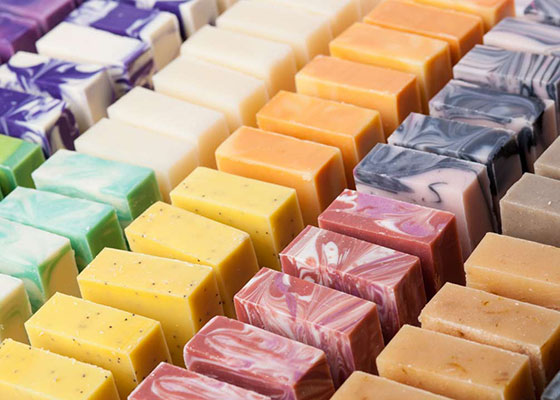
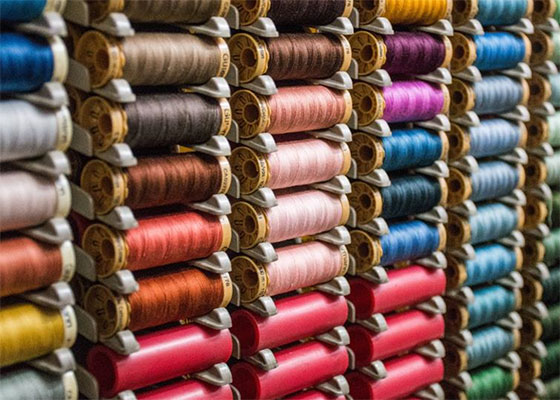
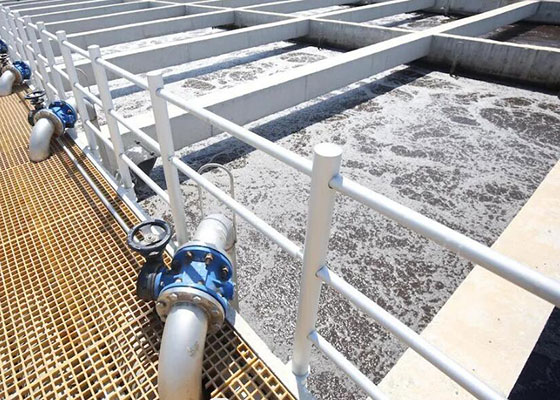
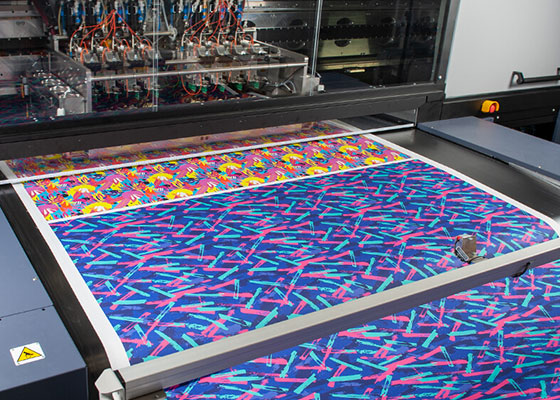
Frequent Asked Questions About Caustic Soda
Sodium hydroxide is highly corrosive and absorbent.
It can be used as a desiccant, but can’t dry acid gases such as sulfur dioxide, carbon dioxide, and hydrogen chloride.
It is easy to to deliquescence in the air, dissolves in water, and releases a lot of heat at the same time.
Its melting point is 318.4°C. In addition to being soluble in water, sodium hydroxide is easily soluble in ethanol and glycerol, but insoluble in acetaldehyde, acetone and liquid ammonia. The liquid is a colorless, astringent and creamy liquid.
Sodium hydroxide in the air can react with carbon dioxide and deteriorate.
It has a corrosive effect on fibers, skin, glass, ceramics, and emits heat when dissolved or diluted with concentrated solutions.
Neutralization reaction with inorganic acids can also generate a lot of heat and generate corresponding salts.
Reacts with metal aluminum and zinc, non-metallic bricks and silicon to release hydrogen.
Disproportionation reaction with halogens such as chlorine, bromine and iodine. It can precipitate metal ions from aqueous solutions as hydroxides.
It can make the saponification reaction of oil and produce the corresponding sodium salt and alcohol of organic acid, which is the principle of removing oil stains on fabrics.
In terms of appearance
The most significant difference between pearl and flake caustic soda is the physical form and shape. Granulated alkali is a beaded round solid. And the shape of flake alkali is white translucent flake solid. The industrial grade flake caustic soda is allowed to have microstrip color according to the national standard, which is the color presented by the impurities in the flake alkali.
Different production processes
They are both produced by liquid caustic soda processing. Flake sodium hydroxide is prepared by flake machine, while pearl sodium hydroxide is prepared by granulation equipment. The pearls type is more convenient to use.
Price
The manufacturing process of caustic soda pearls is more difficult and complicated than that of caustic soda flake. Therefore, the price of pearl type is also higher than that of flake type.
Differences in uses
Caustic soda flakes are inexpensive to manufacture, making them ideal for industrial use. The effect of flake caustic soda used in some sewage treatment is often very good, and many industries that require disinfection treatment also use flake caustic soda. Flake caustic soda is also often used as a desiccant, which has a strong ability to absorb water molecules in the air.
Caustic soda pearls are widely used in chemical industries such as medicine and cosmetics. In addition, because caustic soda pearls are easy to use and weigh, it is more convenient to use pearls caustic soda when conducting experiments.
Ordinary soap is the sodium salt of higher fatty acid, which is generally prepared by saponification of oil under the action of a slight excess of caustic soda. It is the main raw material for the production of solid soap. When making soap, it must be prepared into a 30% solution. When caustic soda flakes or pearls are added into a liquid, it will form lye. When this solution is mixed with oil or fat, it causes a chemical reaction called saponification.
The production methods mainly include two categories: causticization and electrolysis. The causticization method is divided into sodium carbonate causticization method and natural alkali causticization method according to different raw materials. Electrolysis method can be divided into diaphragm electrolysis and ion exchange membrane.
Causticizing Process
After crushing, dissolving and clarifying, add trona to lime milk for causticizing at 95~100℃.
Clarify, evaporate and concentrate caustic liquid to about 46% NaOH concentration.
After the clear liquid is cooled and salted, it is further boiled and concentrated to obtain a solid product.
Electrolysis Process
Add soda ash, barium chloride refined preparations after the original salified salt.
Remove impurities such as calcium, magnesium and sulfate ions.
Then add sodium polyacrylate or causticized bran to the clarifier to accelerate precipitation.
After sand filtration, add hydrochloric acid for neutralization.
Preheat brine and send to electrolysis.
Preheat, salt and cool the electrolyte to obtain liquid, which is further concentrated to obtain solid caustic soda.
The main difference between the diaphragm method and the ion membrane method is that the evaporation process of the diaphragm method for making alkali is more complicated than the ion membrane method. While the ion membrane method has more processes of dechlorination of light brine and secondary purification of brine.
- Store in a cool, dry, well-ventilated warehouse.
- Keep away from fire and heat sources.
- The storage temperature should not exceed 35℃, and the relative humidity should not exceed 80%.
- The packaging must be airtight and must not get wet.
- It should be stored separately from combustibles, acids, etc.
- Storage areas should be provided with suitable materials to contain spills.
Inquiry Us for Quotation Here
Leave your requirements in detail here(including the specifications, package, quantity, country, etc.), we will reply you quickly.
SEND US EMAILGET PRICE NOWWhere to Buy Caustic Soda 99%
Are you looking for high-quality caustic soda for your business? If you are, then Fengbai would be your best choice. Here are the reasons.
- First, with more than 15 years experience, we always try our best to provide best products for our customers. Fengbai has own research and development team. And fengbai products have passed various quality testing certifications, including ISO9001, SGS, HACCP, KOSHER, HALAL, etc.. Fengbai products have been exported to many countries and regions, such as Pakistan, Korea, Thailand, Vietnam, Malaysia, Indonesia, Iran, Chile, Brazil, United Arab Emirates, Saudi Arabiaetc, Uzbekistan, etc. You don’t have to worry about the quality of our products.
- Second, we could provide one to one service for our customers. If you are not sure what kind of product is the best for you, please feel free to contact us. We will provide you with the most suitable products according to your needs.
- Third, as a professional water treatment chemicals manufacturer, fengbai has its own production line and factory, so we can ensure the timely supply of our products. Fengbai provides caustic soda flakes or pearls according to your needs. No more hesitate, just contact us online now!
